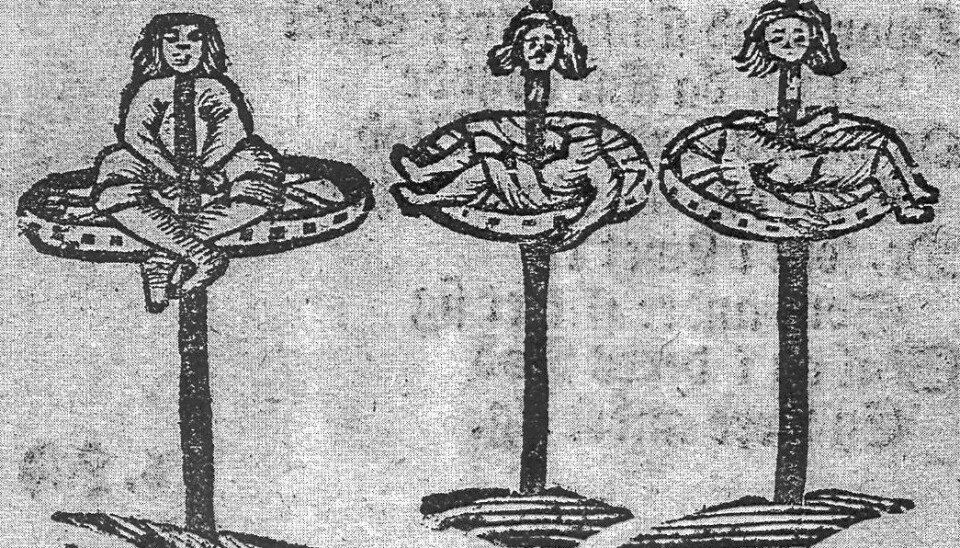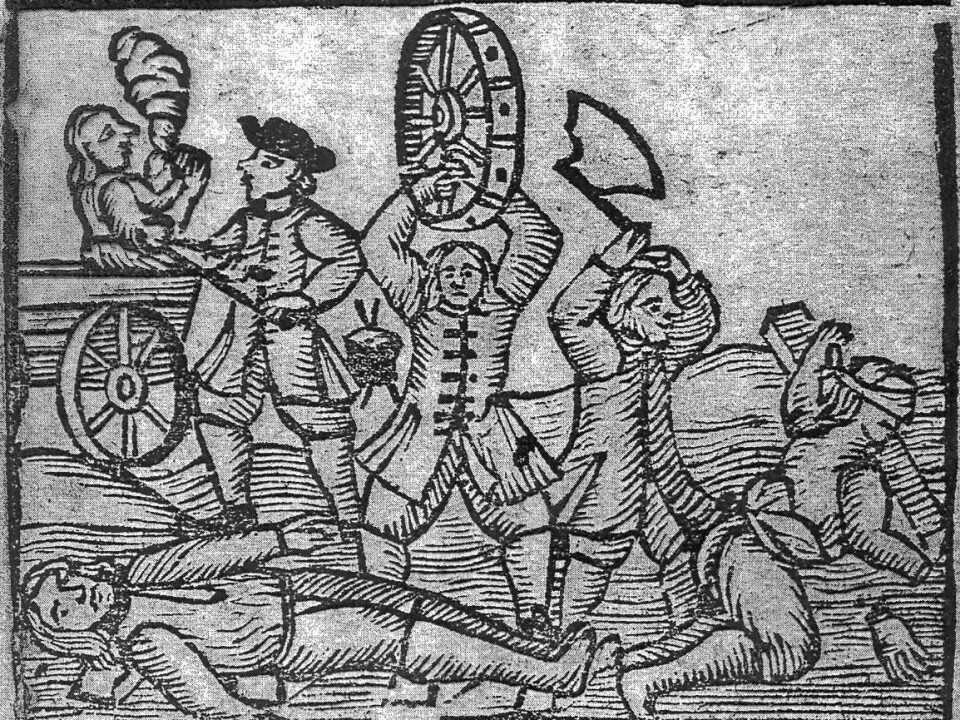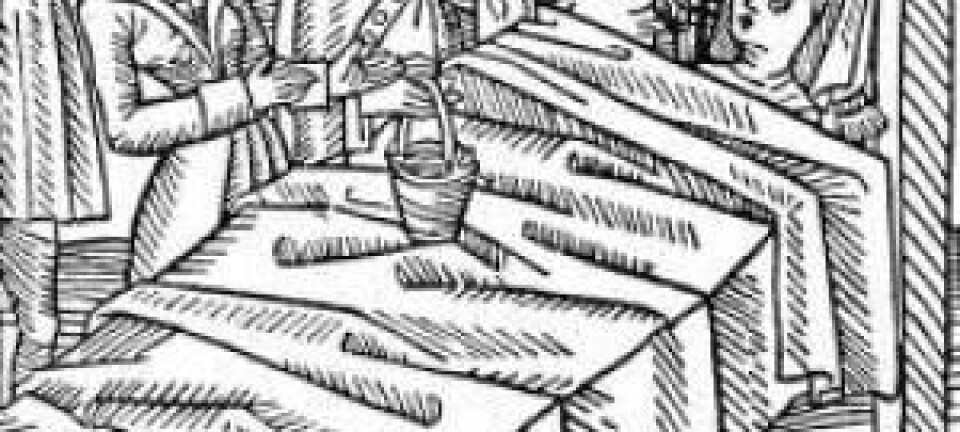
Danes killed to get killed
Eighteenth century suicide candidates were afraid to take their own lives because the church said doing so would send them straight to hell. So they had to find another way out.
Suicide murder was a widespread phenomenon in 18th century Denmark. Instead of taking their own life, suicide candidates would kill a child or some other random person, in the hope that they would receive a death penalty.
In his new book, “A Lutheran Plague – Murdering to Die in the Eighteenth Century”, Tyge Krogh, a senior researcher at the Danish State Archives, looks into this hitherto overlooked aspect of Danish history.
Murderers were saved by faith in God
Eighteenth century Danes were more religious than modern Danes. And according to the church, killing yourself meant you would end up in hell.
On the other hand, if you repented your horrible deeds just before the execution, you received a direct ticket to heaven.

This view is based on Martin Luther’s conception of Christianity.
“Luther believed that we received redemption by conceding our own sinfulness and by sincerely repenting our sins and believing in God,” says Krogh.
The final moment of life was the most important one in which to repent your sins and to affirm your faith in God – because then you couldn’t commit any more sins, he explains. So if someone with a death sentence showed sincere repentance, it was thought that the soul would receive redemption.
Luther to blame for suicide murders
The wave of suicide murders swept across all Evangelical Lutheran countries in northern Europe.
This is how Denmark pioneered the abolition of the death penalty.
Unlike the Catholic Church, Lutherans read the laws of the Pentateuch very literally – and these laws prescribed the death penalty for murder.
When God demanded the death penalty, there wasn’t much to discuss for the pious Danish authorities.
This put Denmark – and other Evangelical Lutheran countries – in a very special situation:
- On the one hand, murderers should be executed
- On the other hand, murderers who repented their sins could escape the torments of hell.
There will always be some people who are attracted by the thought of being executed – and that’s an important point to bring into the capital punishment debate.
This made it attractive for suicide candidates to become murderers.
The state introduces harshest penalties in Danish history
After years of suicide murder mayhem, the Danish judiciary started to realise that something wasn’t right.
The civil servants noticed that the country’s criminal code wasn’t functioning properly, but rather was the actual cause of the random killings of innocent people.
“This became such a big worry for state officials that they reacted by introducing the harshest death penalties in Danish history,” explains the researcher.
Whipped, pinched and smashed
The penalty was particularly harsh if the suicide murderer was a soldier:
Military courts sentenced suicide murderers to a weekly whipping for nine weeks leading up to the execution. When the day arrived, the executioner would use a large wagon wheel to smash as many bones as possible in the soldier's body and then fix him to the wheel where he was left to die from his injuries.
Civil courts sentenced suicide murderers to be pinched five times with red-hot tongs on their way from the prison to the scaffold. Then their hands were chopped off, followed by the head, after which the dead body was displayed on a big wheel as a warning to others.
Execution – a sure path to salvation
Although the penalties for these murders were on the harsh side, they didn’t seem to help much.
“The population regarded execution as the surest way to salvation of the soul,” says the researcher. “Folk songs were written which described how the murderers rejoiced at the thought of getting executed. They looked forward to going to heaven, sitting in front of God’s throne wearing their white robes.”
It was believed that the greater the torments you suffered in connection with the execution, the nearer you came to a guaranteed place in heaven.
This belief didn’t do much good for the state’s efforts to find penalties that were sufficiently hard to deter the suicide murderers.
Denmark abolished the death penalty
As the harsh penalties failed to solve the problem, it was suggested that perhaps abolishing the death penalty altogether could do the trick.
This, however, flew in the face of what the Lutheran countries had been enforcing for more than 200 years, arguing that it was God’s will that suicide murderers should be executed. As a result, the proposal was initially rejected by theologians, lawyers and the government alike.
Nevertheless, the number of suicide murders just kept on growing.
But when, a decade later, in 1767, the death penalty was finally abolished, convicted suicide murderers were instead whipped once a year and were given the toughest and most degrading work tasks on offer. And this was what finally put an end to the suicide murders.
“This is how Denmark pioneered the abolition of the death penalty,” says Krogh. “But it wasn’t something people were proud of. This decision was a gross violation of the religious conception of the criminal system. Gradually, other countries started following suit, including Prussia.”
Suicide murderers exist in today’s USA
One would think that suicide murders were a thing of the distant past. But even today, these horrific murders are committed in countries that have capital punishment.
”These suicide murders actually also occur in today’s USA. Research has pointed out several murderers, who committed their crimes with the sole purpose of being executed,” he says.
“The suicide murders in the USA are nowhere near as frequent as those in the 18th century,” he adds.”But it shows that suicide murder is a byproduct of having the death penalty. There will always be some people who are attracted by the thought of being executed – and that’s an important point to bring into the capital punishment debate.”
’A Lutheran Plague – Murdering to Die in the Eighteenth Century’ is published in English by Brill Academic Publishers.
-------------------------------
Read this story in Danish at videnskab.dk
Translated by: Dann Vinther
Scientific links
- ’A Lutheran Plague – Murdering to Die in the Eighteenth Century’
- Article about suicide murders in today's USA: van Wormer,Katherine et al, The Psychology of Suicide-Murder and the Death Penalty, 1999. Journal of Criminal Justice, 27(4), 361-370







